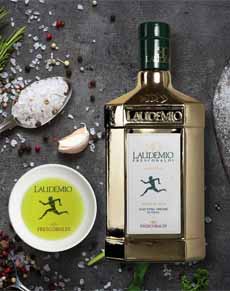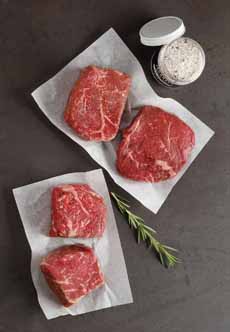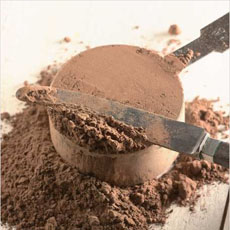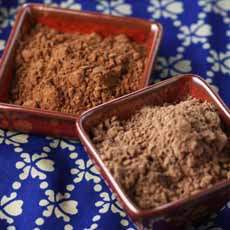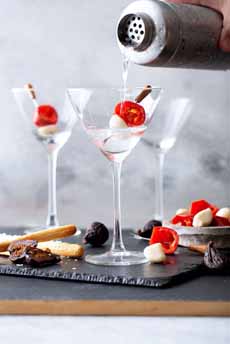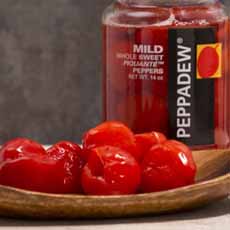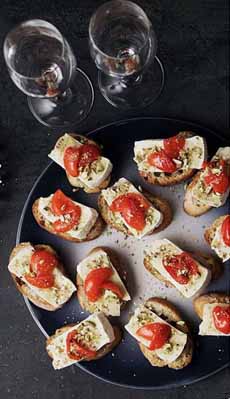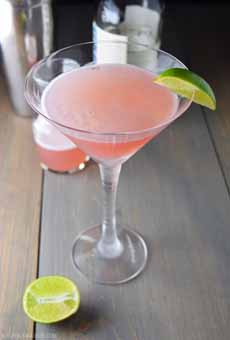|
February 2nd is National Tater Tot Day. First, the legal stuff: Tater Tot® (photo #1) is the registered trademark of Ore-Ida. Everything else must be called, generically, a potato tot.
Here’s the history of Tater Tots: how the little nuggets came to be.
Now, how about an enhancement of the original: a yummy Potato Tot Casserole with braised beef—braised in stout?
Short ribs, a super rich, juicy, flavorful cut, stout, and a spoonful of truffle paste, elevate the humble tot to a fancy meal.
Stout is the darkest and heartiest of beers, differentiated from a regular ale by its brown-black color, chocolate-coffee flavors, and fuller body. It is thus both darker and maltier than porter, has a more pronounced hop aroma, and may reach an alcoholic content of 6% to 7%.
Cremini mushrooms add to the symphony (photo #3—also spelled crimini, and also called brown mushrooms). Creminis are similar in size and shape to the white button mushroom, though tan to brown in color and far meatier and earthier in taste with a firmer texture.
Creminis are actually portobello mushrooms that have been harvested while they are young, while the veil still covers the gill surface. They cook more firmly and with less shrinkage than classic whites, and are a great complement to any meat or vegetable dish.
This recipe (photo #2) comes to us from the Idaho Potato Commission.
It’s a time-consuming recipe, the kind you make on a Saturday afternoon to serve for Sunday dinner. If you make your own potato tots, you’ll need to prepare them a day in advance. Otherwise, you can purchase tots.
> The history of Tater Tots.
> The history of potatoes.
RECIPE: POTATO TOT CASSEROLE
Ingredients For The Braised Beef
5 pounds beef short ribs (photo #3), trimmed, cut into 1-inch pieces
1 tablespoon kosher salt
½ tablespoon black pepper
2 tablespoons vegetable oil
1 tablespoon tomato paste
1 yellow onion, peeled, quartered
1 carrot, peeled, quartered
1 stalk celery, quartered
24 ounces stout (substitute other strong beer, beef stock
or mushroom stock)
6 cups beef stock
1 sprig thyme
2 bay leaves
2 tablespoons cornstarch, mixed with cold water to form a paste
For The Potato Tots
12 large Idaho russet potatoes
5 tablespoons vegetable oil, plus 2 cups for frying
4 tablespoons kosher salt
1 tablespoon black pepper
4 tablespoons extra-virgin olive oil
For The Casserole
Braised beef (ingredients above) plus reserved braising liquid
2 cups pearl onions, cooked
2 cups cremini mushrooms, cooked, quartered (photo #4)
2 tablespoons heavy cream
2 tablespoons black truffle paste* (photo #5)
Potato tots (see below)
1 cup gruyère cheese, grated
2 tablespoons fresh chives, chopped
________________
*If you cannot find truffle paste, substitute the gruyère for grateable truffle cheese (photo #6). Unfortunately, truffles are so unique that there isn’t a substitute, especially in a dish that already uses mushrooms.
________________
Preparation For The Braised Beef
1. PREHEAT the oven to 325°F. Season the short ribs with salt and pepper. Heat a large Dutch oven over medium-high heat. Add the vegetable oil and sear the beef on both sides, working in batches. Then remove it from the pot.
2. KEEP the pot over medium heat, add the tomato paste and cook for 2 minutes. Add the onions, carrots, and celery; brown slightly. Add the stout. Turn down the heat to low and reduce the liquid slightly. Place the beef back in the pot and add the beef stock, thyme and bay leaves. Bring to a simmer, cover, and braise in the oven until tender, 30 to 40 minutes.
3. REMOVE the meat from the braising liquid and reserve it. Strain the liquid into a saucepan, bring it to a boil and whisk in the cornstarch to thicken slightly.
For The Potato Tots
1. HEAT the oven to 350°F. Wash the potatoes well with water to remove all dirt. Lightly prick the potatoes with a fork and toss with 4 tablespoons vegetable oil and 2 tablespoons salt.
2. SPREAD the potatoes out on a large baking sheet. Roast until tender, about 1 hour. Remove from the oven and allow to cool to room temperature, about 1 hour. Discard the skins.
3. CUT the potatoes in half and press the flesh through a baking grate into a large mixing bowl. Season with 2 tablespoons salt and 1 tablespoon black pepper, then fold in 4 tablespoons olive oil.
4. LINE a half-sheet tray with parchment paper and lightly grease it with 1 tablespoon of vegetable oil. Firmly and evenly, press the potato mix into the tray. Cover with plastic wrap and allow to chill overnight.
5. CUT the potato mixture into about 1-inch squares. Heat 2 cups of vegetable oil in a shallow fry pan to about 325°F. Carefully place the potato squares into the oil and fry until golden and crispy, flipping as needed and working in small batches so as not to crowd the pan. Remove from the oil and drain on a paper towel-lined plate.
|
|
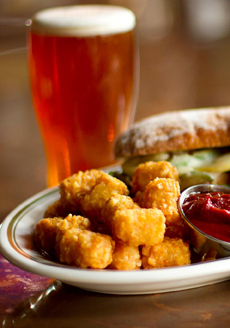
[1] Tater Tots with ketchup (photo © Red Duck Foods).

[2] Potato tot casserole (photo and recipe © Idaho Potato Commission).
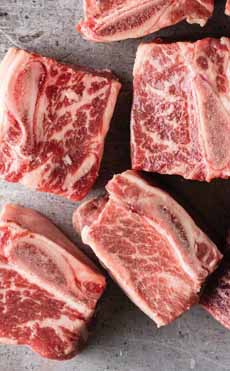
[3] Beef short ribs (photo © Omaha Steaks).

[4] Cremini (also spelled crimini) mushrooms (photo © Good Eggs).
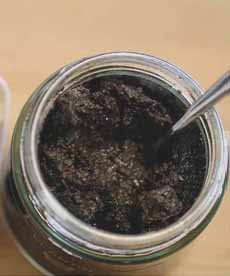
[5] Black truffle paste (photo courtesy My Panier).
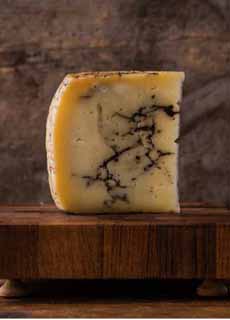
[6] Moliterno truffle cheese. If you can’t find truffle paste, use a grateable truffle cheese instead of gruyère (photo courtesy DiBruno Bros.).
|
